
Assessment is one of the important tools in the education sector. It can indicate the potential of learners, schools, including countries, and how potential their education is.
However currently, the old assessment is no longer practical. Many agencies have changed the new assessment process to implement development and adjust the curriculums to be proper for each person and local to prevent the children from missing out on the education system, including supporting education equality.
Aija Maarit Rinkinen, Senior Education Specialist, The World Bank, talked about why the change in student assessment is needed. At the International Conference on Equitable Education: Together Towards Equity, Bangkok, Thailand.
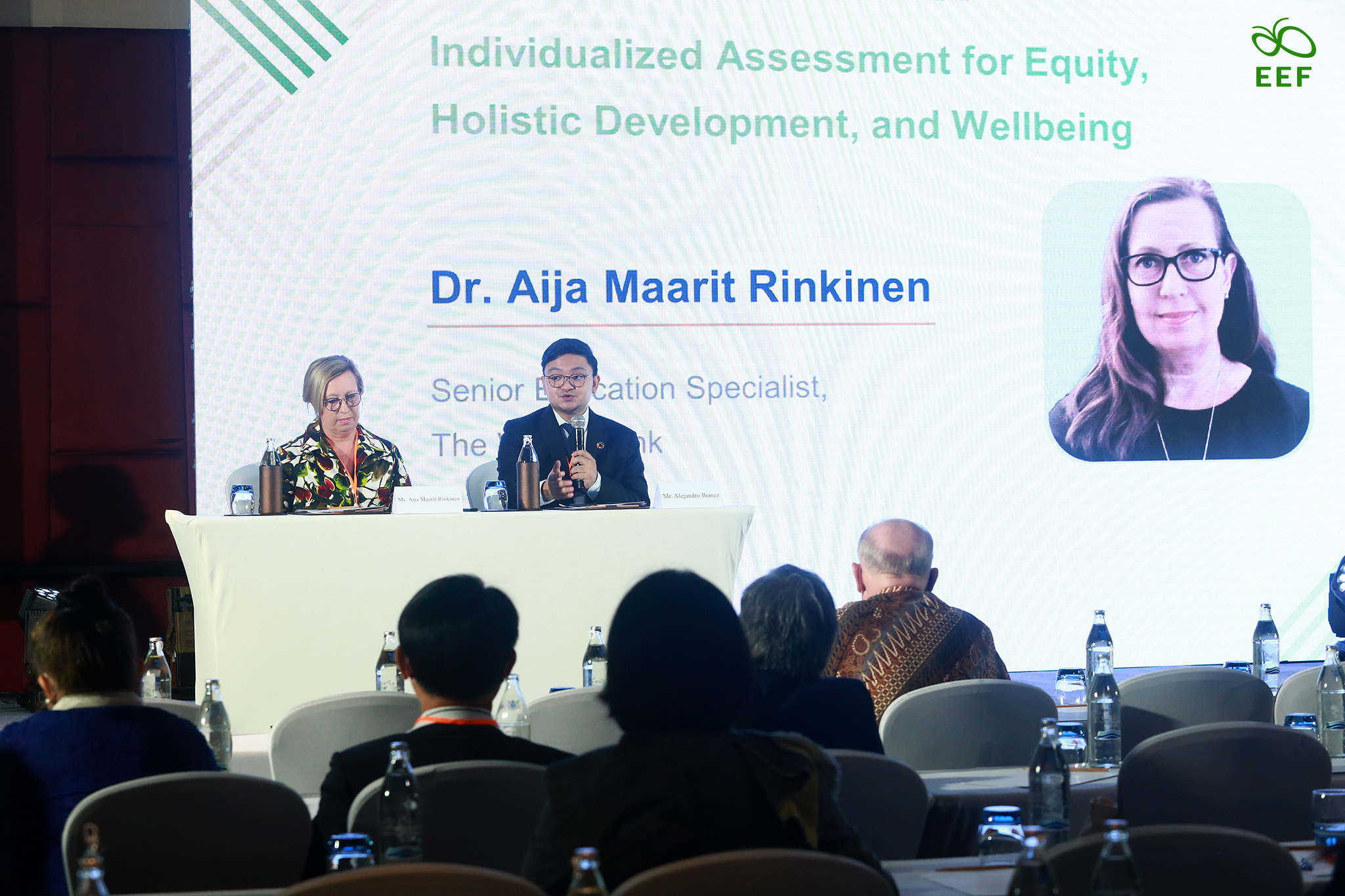
She said that “Teachers’ roles are changing from teaching to guiding and supporting the learning process because the current information is everywhere. Students can search the information through online platforms, radio, and television, including talking to people in other countries.
Students’ roles change from passive recipients of knowledge to active and interactive learners. You will see the teacher and student roles change. Then, they have to change the process of the system at the school level, including the assessment.” Aija said.
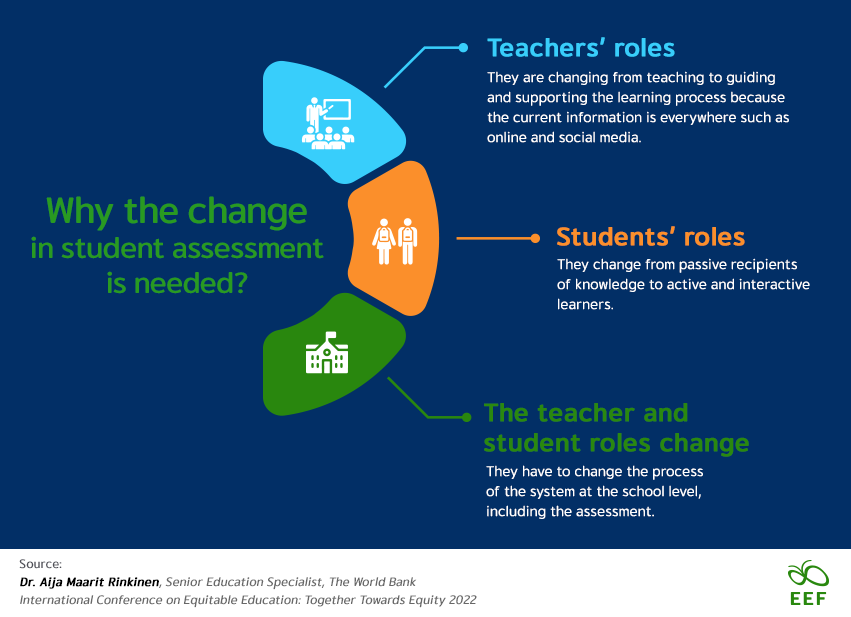
Aija has also said about the importance of assessment that it can guide, motivate and inform students, teachers, and parents about the progress made. Such as how well did the teacher do? Did their students understand what the teacher was trying to teach? And if not, what does the teacher need to do to make a change and do things differently? Because this affects the student learning outcomes, and that is all, of course, necessary when we talk about education.
Aija said that we want our children to learn. If they know how they are doing, they should be able to do something about it, and they will develop themselves to learn better. Example: If a student’s outcomes could be better, the teacher will help them to improve their performance. When students feel that they are supported, then it reduces stress and pressure to perform, including enhancing their improved self-confidence.
“We have to provide the frequent and ongoing activities for assessment are needed and give feedback to the learner. So assessment is not only testing, but testing is part of it. It’s getting information where we go. It takes place before the learning process, during the process, and after the process.” Aija said.
“The most important thing is we have to use many methods by different tools like exams, activities. So, we take into account the pupil’s unique ways of learning. We can ensure that there are no obstacles for them to demonstrate the process of achievement and teaching. And then, the teacher chooses the assessment method suitable for the student, “ Aija said.

Dr.Joanne Caddy, PISA for schools Team Leader/ Senior Analyst, Organisation for Economic Co-operation and Development (OECD), said that the PISA for Schools is interested in measuring the courses. They will measure from the beginning. So what we measure in our competence-based assessment is not content knowledge but how students can apply their knowledge to novel situations. Then that is the beginning of the journey. We need to help the schools, teachers, and school leaders explore their data and support them as they act.
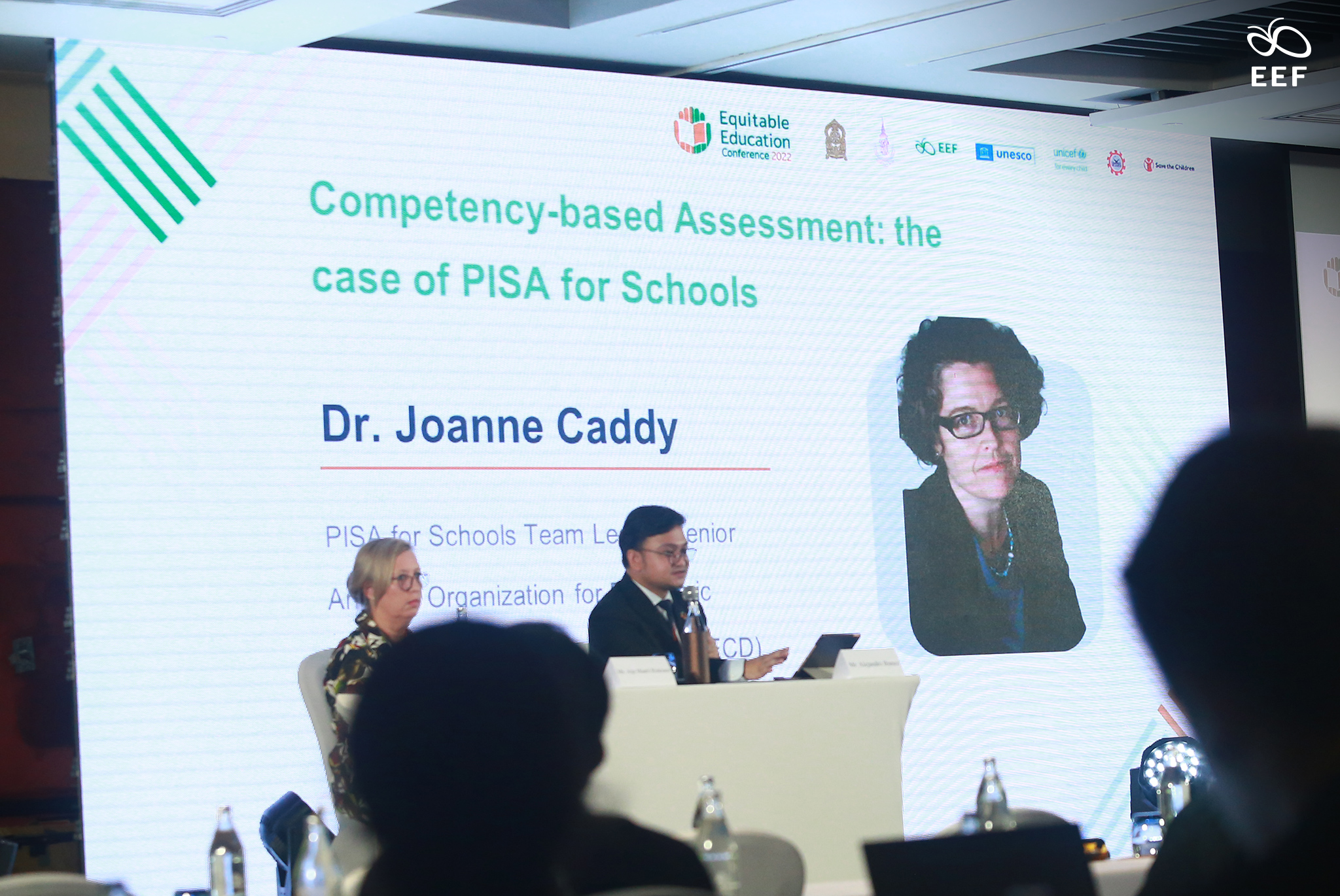
Pisa is the assessment of a student’s competency according to international standards by the Organisation for Economic Co-operation and Development (OECD) that tests the potential of students who are 15 years old in each country that tries every 3 years. They will focus on the knowledge that can be used in real life.
They also have the PISA-based test for schools that assesses performance at a school level and gives these data into the hands of school leaders to improve their schools.
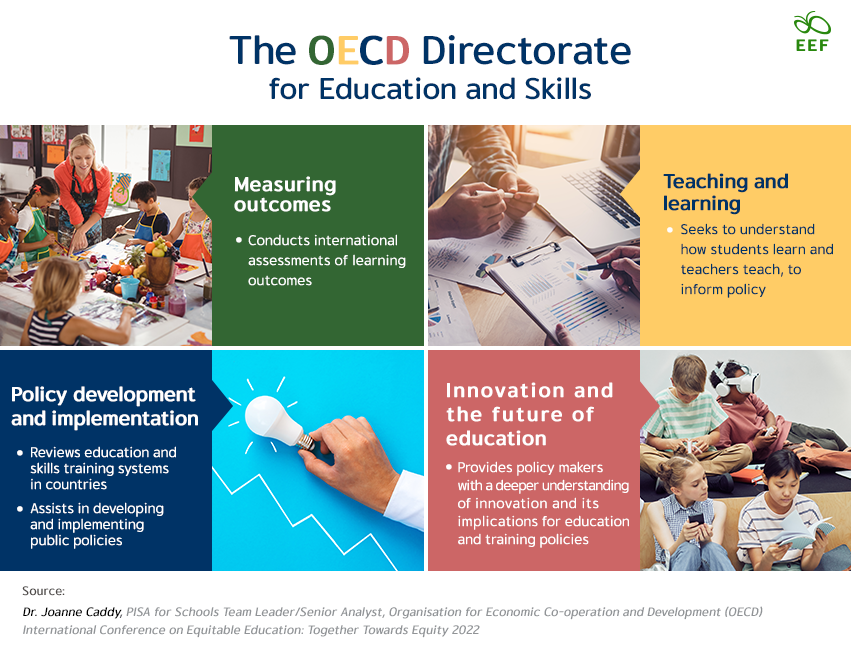
“Voice of students is most important to learn about their life. We must ask them about our children’s lives, including their families, to look into the equality Index. We need to know their advantages and disadvantages to understand the school can help them with equality. We need to ask them about their study experience, life during the school closed, and their perspective on learning.” Joanne said.

Assessment data is not only helpful in terms of indicating how individual students have the ability and potential to learn. But the assessment data from many sectors can help the ministry implement the development of the education system in the future.
Haryati Mohamed Razali, Senior Principal Assistant Director, Educational Macro Data Planning Sector, Ministry of Education Malaysia, has divided the assessment in Malaysia into 2 types: School-based assessment and Centralized examination.
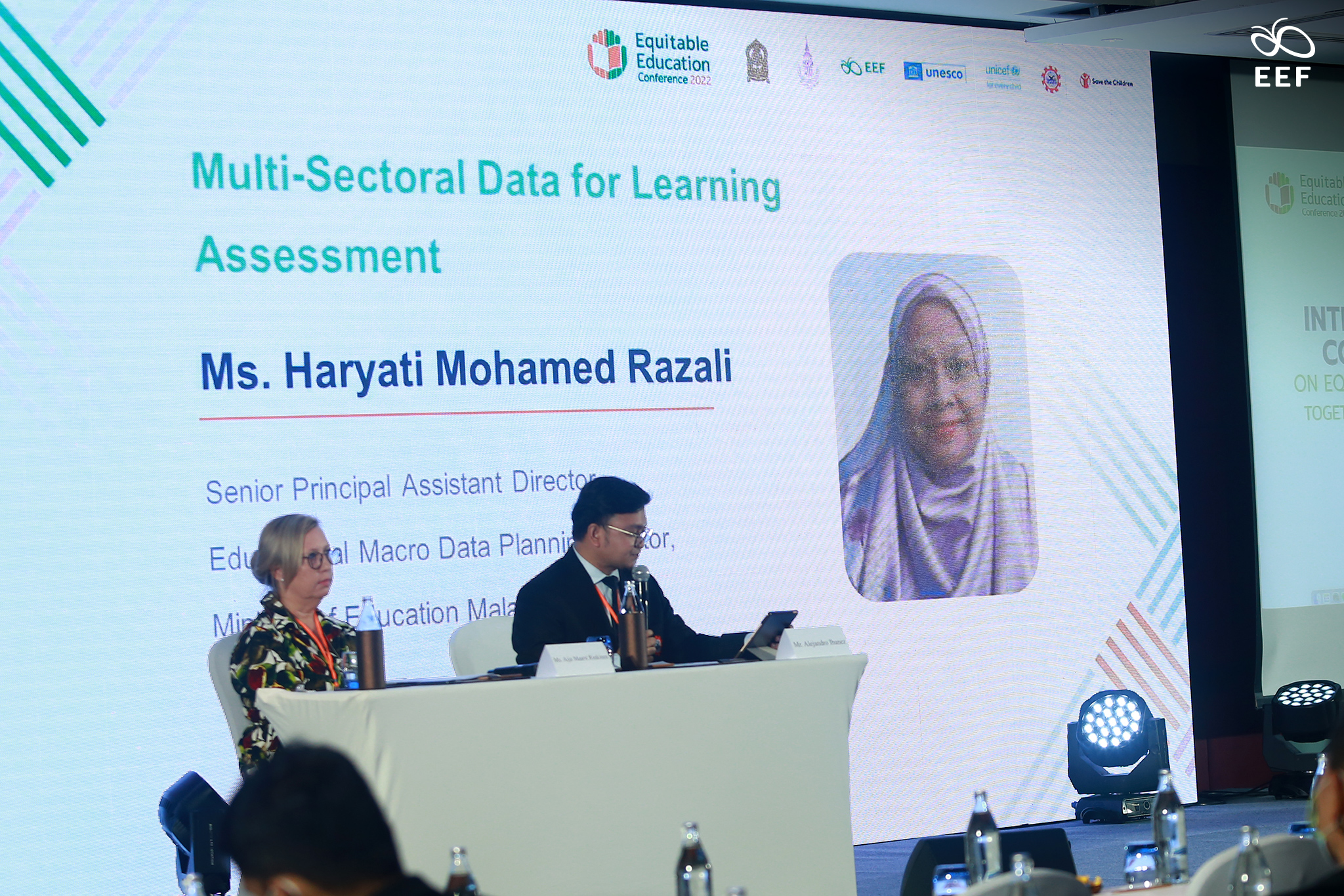
The school-based assessment consists of two components: the academic and non-academic components. The educational component will measure the level of the student’s knowledge when they end up in the learning program. They also have classroom assessments to determine students’ levels in each subject. The non-academic component has a physical activity, sports, and co-curriculums assessment used to assess physical fitness. And they have another psychometric assessment to provide information on students’ intelligence structure and interest inclination of that particular student.
The centralized examination is fully managed and regulated by their examination syndicate under the Ministry of Education, Malaysia. The examination indicates taking full responsibility for the candidate’s regulation, preparing the test items, administering the assessments, scoring, and certification covered in academic and vocational courses.
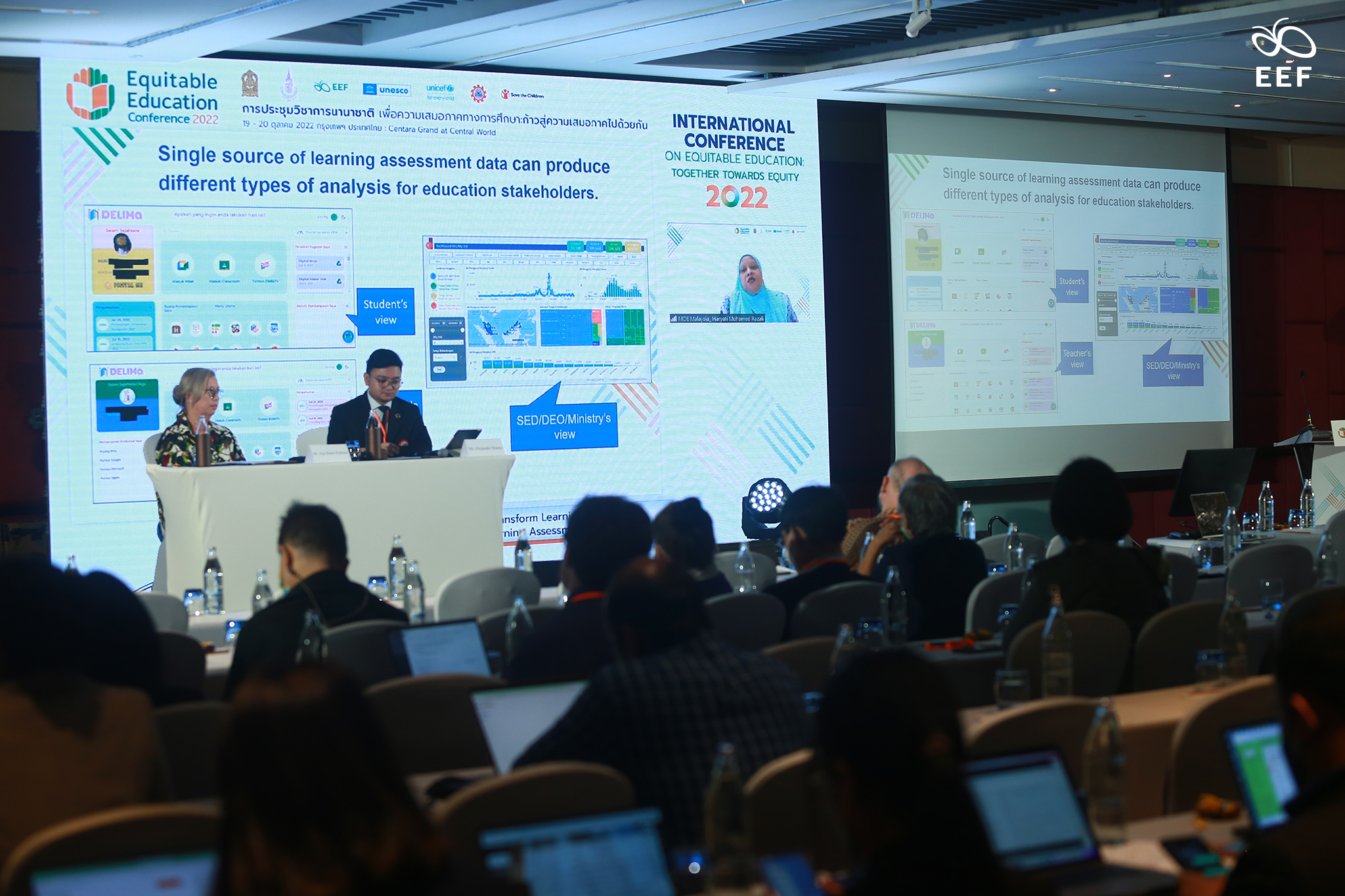
Razali said that the assessment data of Malaysia are collected through many systems so that we can access all these data from the level of school districts, states, and national. We collected it in a database that we called ‘EMIS.’ For the information of individual students, we have a few online systems for collecting, recording, processing, and using it.
COVID-19 has pushed to development of these tools, and they collect data during school closures. Malaysia created a digital learning platform like ‘DELIMA’ to connect with many teaching materials. A single assessment data set can be used for an analysis system, and teachers can bring these data to adapt the suitable curriculums for their students. Teachers can also check the students who can’t keep up with their friends, and teachers will adjust homework or activities that suit them.

Razali has also said that if we connect the learning assessment data with other data sets. We can ensure students stay in the education system. The Ministry of Education in Malaysia has used many indicators to determine the risk level of 5 million students across Malaysia. These indicators will identify each student as having a low, medium, or high risk of dropping out.
“In the future, we can raise the capability of teachers and school administrators by using the assessment data. It can help to make informed decisions and awareness about the potential of assessment data to transform learning. Most of all, we have to integrate an assessment management system to strengthen. Education must have a centralized system to make decisions and to reduce teacher workload from entering data into multiple systems,” Razali said
Source
International Conference on Equitable Education: Together Towards Equity 2022
Session 5: Assessment as a Tool to Transform Learning

